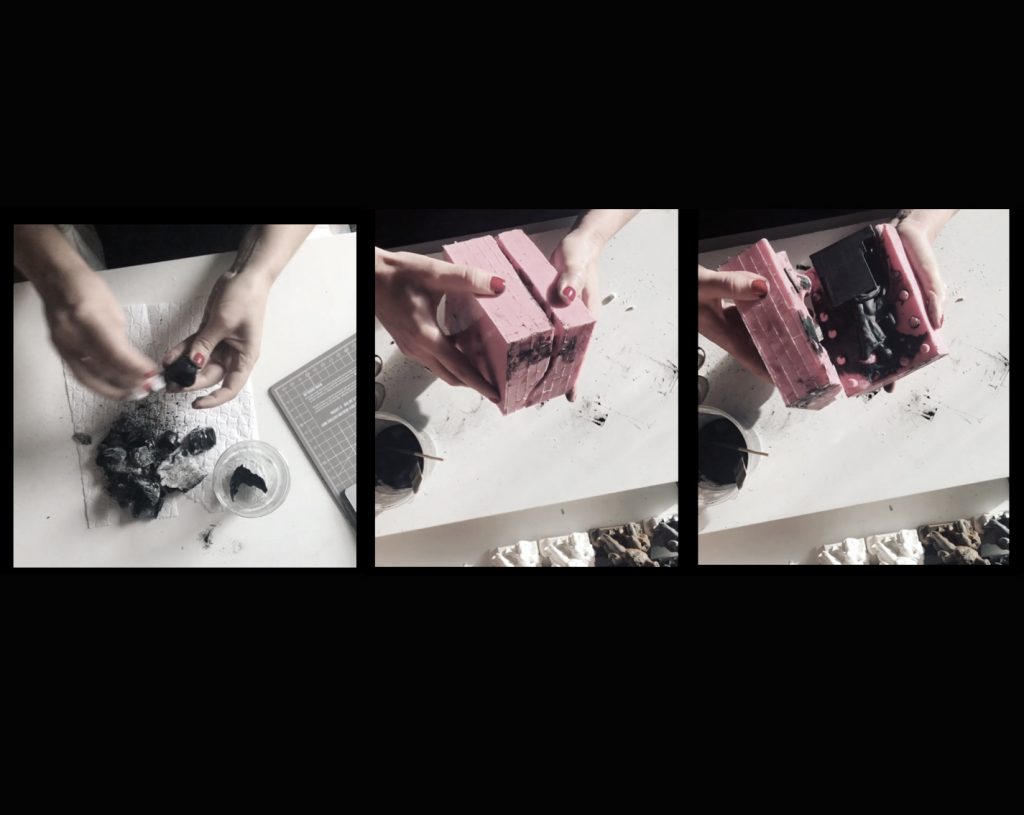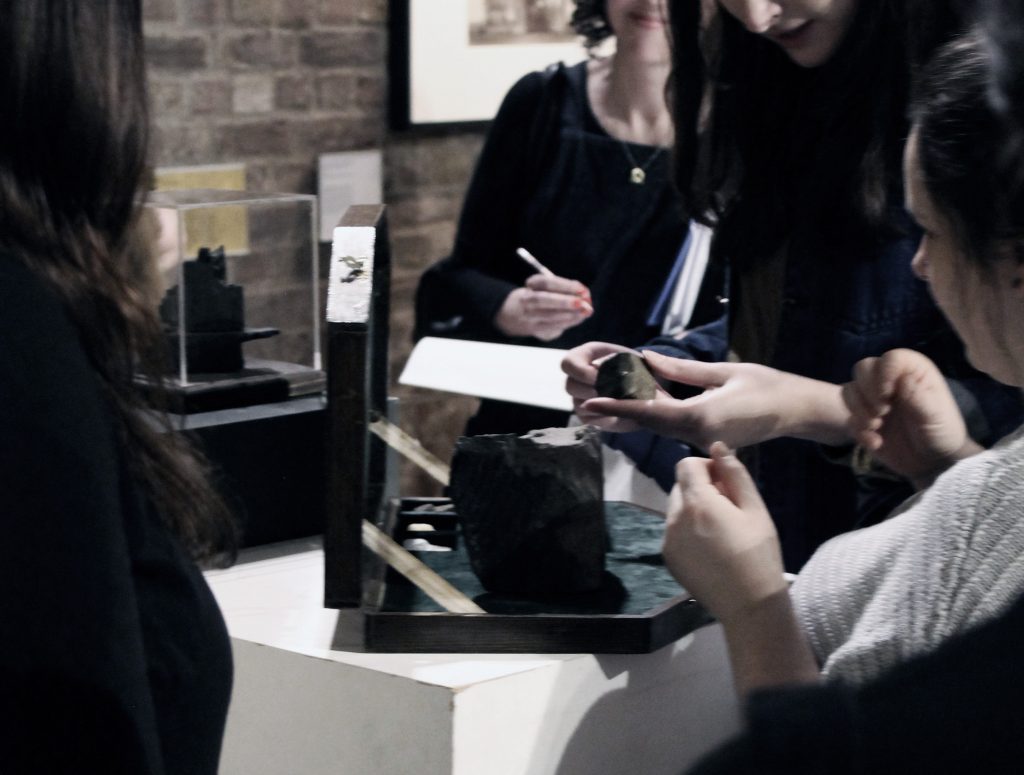
Why are we seduced by the idea of the ‘original’ and drawn to the old, worn or ruined? Is the aura of a ‘thing’ bound to its materiality, or is its aura a social construct capable of migrating to other objects, replicas or reproductions? These questions lay the foundation for my practice-based PhD scholarship, which investigates if the use of contemporary art practice can facilitate deeper engagement with restored or reconstructed material culture.
Using interactive installations and live events, I’ve been exploring our attractions to materials and the lure of the original; interrogating the potential cross-overs between the authentic reproductions associated with heritage management, and the artistic replications seen at various moments in art history. Each of my works is based on lost or damaged material from the Glasgow School of Art’s Mackintosh Building, and invites participants to reassemble lost artefacts and re-examine how we use objects to tell stories. The live events create an environment that encourages discussion while questioning and dismantling preconceptions.

Heritage is not a passive process of simply preserving things from the past that remain, but an active process of assembling a series of objects, places and practices that we choose to hold up as a mirror to the present […] Thinking of heritage as a creative engagement with the past in the present focuses our attention on our ability to take an active and informed role in the production of our own ‘tomorrow’ (Harrison, 2013, 3)
While the use of the term ‘creative engagement’ above does not refer specifically to the arts as a way to mediate engagement with heritage, it does refer to an active interaction with heritage that complements the ethos of socially engaged art practices. The ‘communitive exchange’ (Kester, 2013) is key, but in the context of replicating auratic encounters, materiality also plays an important role.

Balancing these two conflicting priorities to create affectual experiences with replicas involves recognising the power of material encounters whilst also accepting that the participant brings the lost or vulnerable heritage to life; through their own social interactions with interpretation, the replicas, their shared reminiscence, and by interrogating their own subjective opinions and cultural experiences.
As part of my continuing research on social replicas, I’ll be holding remote workshops in autumn 2020. The new workshop format is based on my past live events, constructing an autonomous experience that participants can use safely at home. Taking the Duchamp’s Boite-en-valise format as inspiration, the workshops will distil the installation experience into a miniature workshop ‘kit.’ It will involve object handling and virtual discussion that will be led by a mixture of reading materials, artists books and film or live streaming.

If you would like to register interest in taking part in one of my workshops, please email your contact details to me.
Carolyn Alexander, PhD candidate, Glasgow School of Art
References
Harrison, R., 2013. Heritage: Critical Approaches. Routledge.
Kester, G.H., 2013. Conversation Pieces: Community and Communication in Modern Art. University of California Press.
